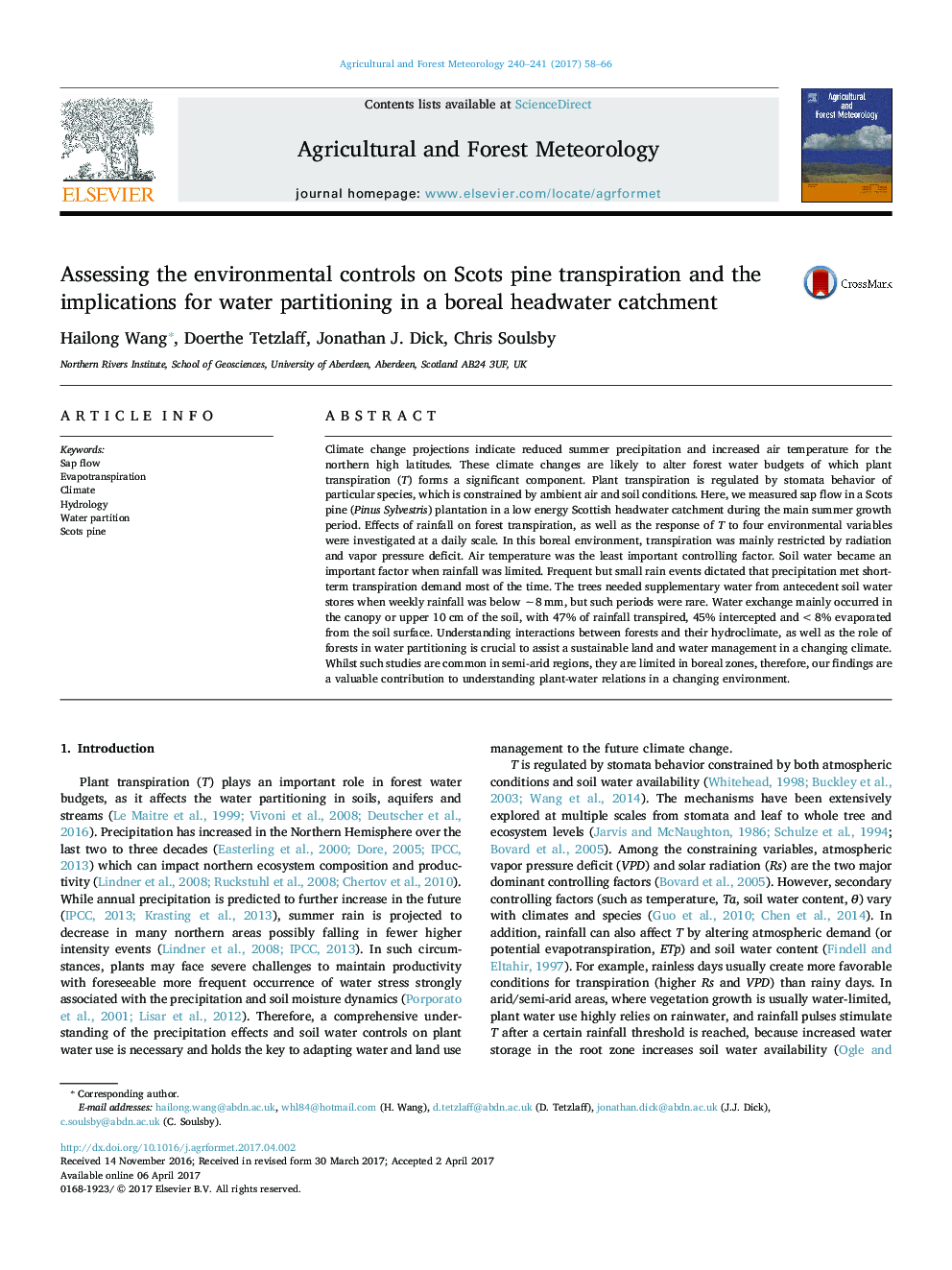| کد مقاله | کد نشریه | سال انتشار | مقاله انگلیسی | نسخه تمام متن |
|---|---|---|---|---|
| 6457884 | 1420859 | 2017 | 9 صفحه PDF | دانلود رایگان |
- Atmospheric and soil water controls on transpiration were differentiated.
- Frequent small rain events were important and met transpiration demand mostly.
- Antecedent soil water was sourced by trees when rainwater deficit occurred.
- Forest transpired 47% and intercepted â¼45% of rainfall, showing rapid water cycling.
- Future drier and warmer summers may enhance “dry gets drier” in the area.
Climate change projections indicate reduced summer precipitation and increased air temperature for the northern high latitudes. These climate changes are likely to alter forest water budgets of which plant transpiration (T) forms a significant component. Plant transpiration is regulated by stomata behavior of particular species, which is constrained by ambient air and soil conditions. Here, we measured sap flow in a Scots pine (Pinus Sylvestris) plantation in a low energy Scottish headwater catchment during the main summer growth period. Effects of rainfall on forest transpiration, as well as the response of T to four environmental variables were investigated at a daily scale. In this boreal environment, transpiration was mainly restricted by radiation and vapor pressure deficit. Air temperature was the least important controlling factor. Soil water became an important factor when rainfall was limited. Frequent but small rain events dictated that precipitation met short-term transpiration demand most of the time. The trees needed supplementary water from antecedent soil water stores when weekly rainfall was below â¼8Â mm, but such periods were rare. Water exchange mainly occurred in the canopy or upper 10Â cm of the soil, with 47% of rainfall transpired, 45% intercepted and <8% evaporated from the soil surface. Understanding interactions between forests and their hydroclimate, as well as the role of forests in water partitioning is crucial to assist a sustainable land and water management in a changing climate. Whilst such studies are common in semi-arid regions, they are limited in boreal zones, therefore, our findings are a valuable contribution to understanding plant-water relations in a changing environment.
Journal: Agricultural and Forest Meteorology - Volumes 240â241, 15 June 2017, Pages 58-66
